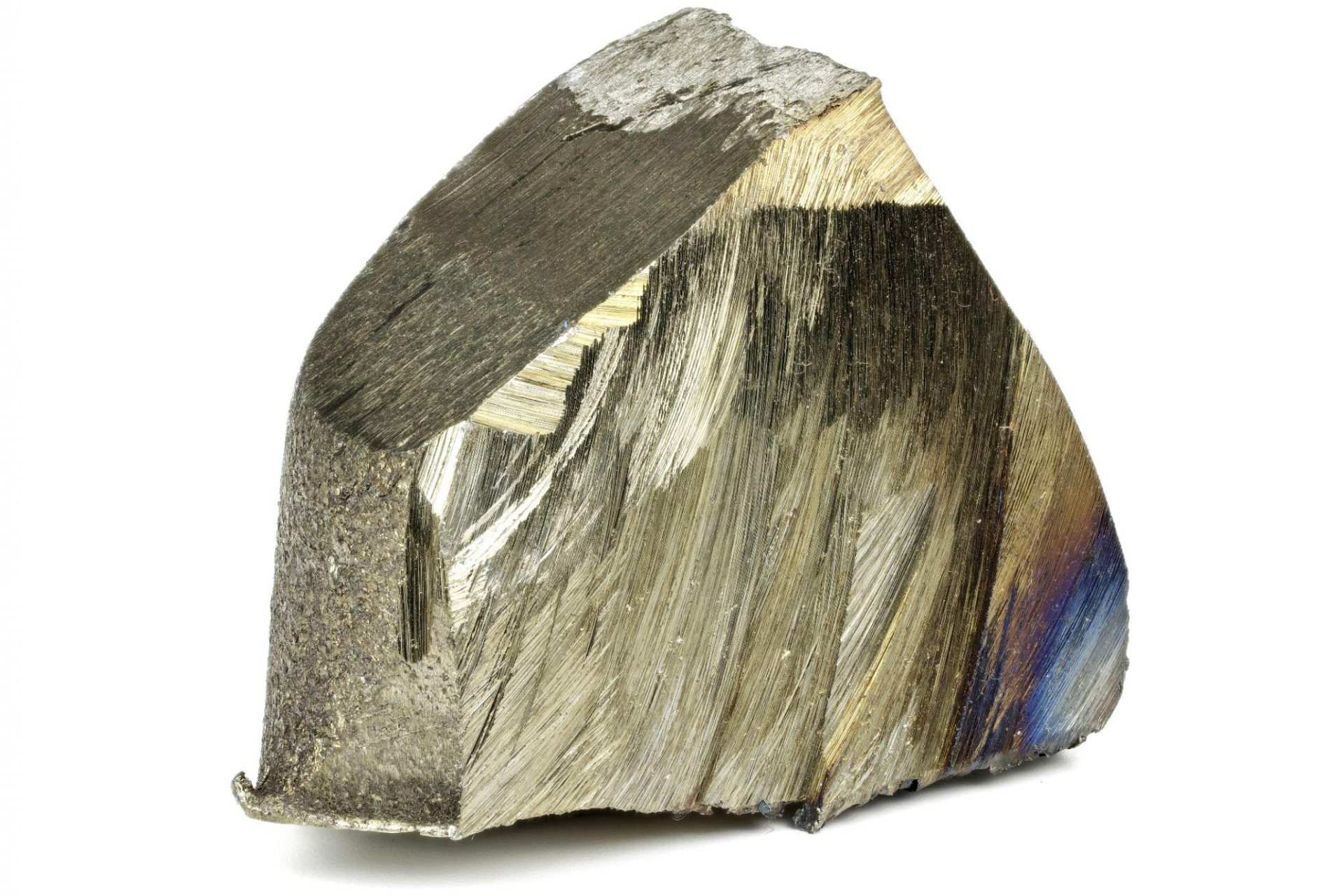Elemental iron is the total amount of iron found in a particular substance or material. Each type of iron has a different amount of elemental iron. For example, wrought iron consists mainly of elemental iron with very minute traces of slag.
On the other hand, cast iron does not contain as much elemental iron. Rather, it is a mixture of elemental iron, carbon, manganese, silicon, and other such metals and alloys.
Where does iron come from?
Iron is one of the most abundant elements found in the universe. Here on Earth, it is found in the crust and core of the planet. Iron is also found in many types of foods we eat and even our bodies!
Finding iron in its purest form in Earth’s crust is relatively rare since there are limited deposits. These deposits were created by meteorites that crashed into Earth millions of years ago. The other place you can find pure iron is in Earth’s core.
The vast majority of iron found in Earth’s crust is iron ore. Iron ore is made up of different types of minerals and rocks that contain iron, including:
- Siderite
- Goethite
- Limonite
- Hematite
- Magnetite
To extract the iron, the iron ore has to be smelted by using a furnace or kiln that is heated to at least 2280 degrees Fahrenheit. At this temperature, the iron ore undergoes a chemical transformation into iron metal that is easier to extract from the ore. If the iron ore is heated to 2,800 degrees Fahrenheit—the melting point of iron—the iron becomes liquid.
It then flows to the bottom of the furnace or kiln, where it combines with slag to become a bloom. The iron blooms are then collected so they can be refined further and transformed into iron products.
What is the chemical symbol for iron?
![]()
If you remember back to your middle school chemistry or science class, the iron element symbol for iron is Fe on the periodic table. It has an atomic number of 26, so it is the 26th entry on the table in column 8. Based on the mass of iron, it is considered to be one of the most common elements—even more abundant than oxygen!
It is essential to remember that the Fe element is pure iron. Iron found naturally in the earth’s crust consists of different iron chemical formulas, such as:
- Fe2O3
- Fe3O4
- FeO
- FeS2
The first three symbols are iron oxides found in iron ores, and the last symbol is iron pyrite, which is better known as fool’s gold.
What are the properties of iron?
Like other metals, iron has various properties, including:
- Iron conducts electricity and heat.
- Iron can be magnetized.
- Pure iron is soft and malleable when heated.
- Pure iron is a white-silvery color.
- Iron will rust when exposed to moisture.
- Coating iron with zinc prevents rusting.
- Iron compounds consist of two types—ferrous and ferric.
Another interesting property of iron is that when magnetized iron is heated until it is red hot, it will no longer be magnetic. However, it will be malleable, so it can be shaped. Yet, when it cools down, the magnetism of the iron will return.
What are some different types of iron?
When iron is heated in a furnace or kiln to extract the pure iron, it makes it possible to create different types of iron depending on the other chemicals and minerals added to the iron. Some of the more common types of iron include:
- Pig Iron – Pig iron is the foundation material used to make other types of iron. It contains carbon and can be transformed into other forms of iron, including steel, cast iron, and wrought iron.
- Steel – One of the most popular types of iron used today is steel. Steel is created when combining iron with small amounts of carbon in a blast furnace.
- Wrought Iron – Wrought iron consists of almost pure iron with almost no carbon that is mixed with a small amount of silicate. The carbon in the pig iron is extracted during further smelting processes.
- Cast Iron – Cast iron is made by smelting pig iron and mixing it with more carbon, silicon, and graphite in varying amounts. Depending on the mixture, you can end up with gray cast iron, white cast iron, or high-alloy cast iron.
What are some modern applications of iron?

Iron has been around for more than 5,000 years. When it was first discovered, iron was used to create tools and weapons to help advance civilizations. As technology and science advanced, the uses for iron continued to grow. Today, there are several things we could not simply live without that are made using iron.
#1: Vehicles
All vehicles use different types of iron in their construction—mainly steel. Cast iron is also used to manufacture engine blocks, headers, and other such components.
#2: Appliances
Washing machines, dryers, refrigerators, ovens, cooktops, stoves, microwaves, freezers, dishwashers, and other appliances we take for granted are all made using iron. Even newer technologies, like induction cooking, rely on iron and magnets to create heat to cook food.
#3: Concrete Roads
Concrete roads would not be as durable or last as long without some type of iron used to help support the road. If you have ever seen new roads being poured, there is always some type of iron framing placed into the ground before the concrete is poured over it.
#4: Buildings
Without iron to make steel, we would not have skyscrapers in our major cities. Even many modern homes are now using steel for their framing because it is more eco-friendly and fully recyclable. Iron and other metals can be melted back into liquid forms and reused over and over again, never losing their fundamental chemical properties.
#5: Bridges
From the Golden Gate Bridge in San Francisco to the Brooklyn Bridge in New York City, iron has allowed us to construct bridges over bodies of water, valleys, and other areas to make an easy way to get from one side to the other.
#6: Blood
We had to include the importance of iron in our bodies. Iron is an essential part of the circulatory system, as it ensures the body continues to produce blood. Iron is primarily found in the red blood cells, which are responsible for absorbing oxygen in your lungs into the blood and transporting it throughout the body.
#7: Wrought Iron Doors, Windows, Gates, and Railings
Wrought iron doors, windows, gates, and railings are still very popular and trendy today. Homeowners and business owners appreciate the durability and strength of wrought iron, which provides many benefits, such as improved security and enhanced curb appeal.
As can be seen, there are all sorts of useful applications for iron that would otherwise not be possible. Now that you know more about iron and its uses, it is the perfect time to give your home or business a makeover with wrought iron doors, windows, gates, and railings.
Discover a wide range of wrought iron products by exploring our live inventories for inspiration. Our ironsmiths are also happy to create unique and one-of-a-kind doors and other products just for you and your home or business.
For further information about wrought iron products, to request a free quote, or to schedule a free design consultation, please feel free to contact Universal Iron Doors at 818-771-1003 today!

